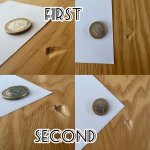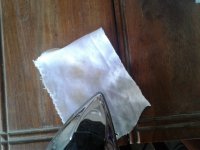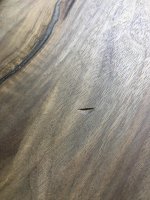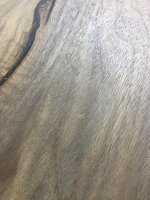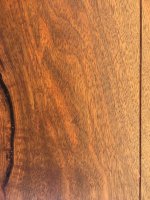Mike35x95x1
Member
- Joined
- Sep 10, 2020
- Messages
- 96
Hi guys, I have a problem and would appreciate any advice on how to solve it. Probably due to fatigue of the material, our pendant lighting fell on the solid ash dining table. After the fall, two deeper scratches remained in the table top - the size of the scratches and the color of the table should be visible from the attached photos. Now I'm thinking about the best way to solve this matter. I will either use ready-made wax sealant in an ash color (for example the Cloe brand), which I will then sand and varnish, or I could use a transparent putty, to which I could theoretically add ash dust from sanding, but here I am afraid that the ash dust will have a different shade due to the fact that it is new wood that has not been exposed to UV radiation - the table is already older and is very yellow. As a last option, I thought of using epoxy (but I have no experience with that at all). Among other things, I want to avoid having to sand the whole board because the repair won't look good. Can you advise what is best?

